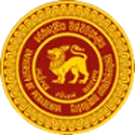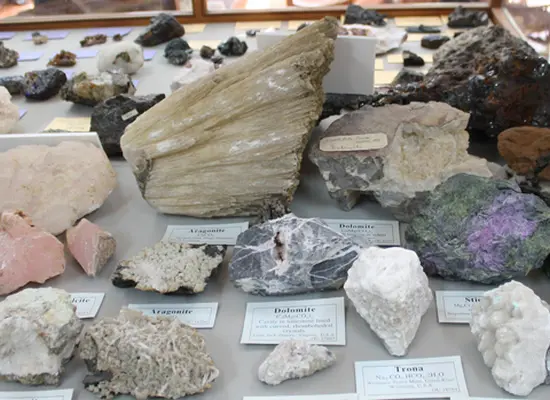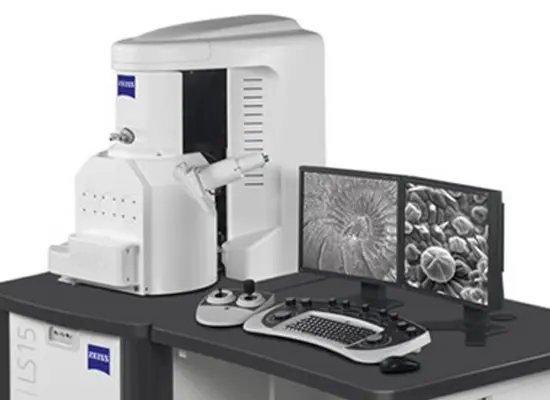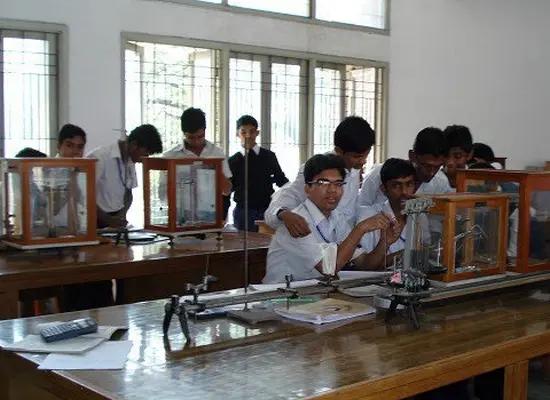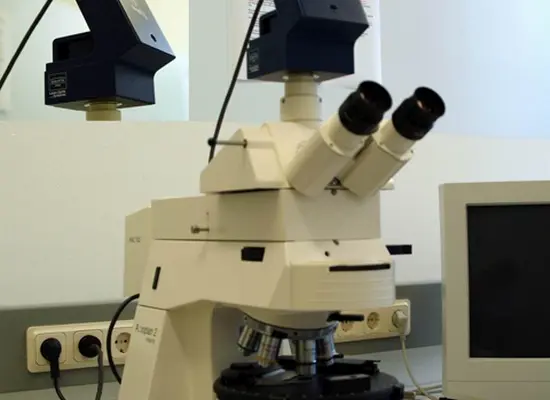Geology Museum
Location: Phase 2 Building - Second Floor
Telephone Extension:
The Geology Museum of the Department is small, but has an excellent collection of minerals, rocks, gems and fossils. A primary role of the museum is to illustrate the diversity of the geology and mineral resources of Sri Lanka. It includes an extensive collection of specimens of many mineral varieties and rocks including gemstones. It serves as a teaching resource for university students and school children as well as the general public.
The main sections of the museum are Mineral Gallery, Rock collection with different examples of igneous, metamorphic, sedimentary rocks, Sri Lankan Gem Collection; Sri Lankan Rock Collection and many more.
Visitors also can touch a real meteorite which is the only recorded meteorite in Sri Lanka.
The Geology Museum welcomes groups of all kinds, particularly school groups of all ages. The museum offers short educational programs for school students that include a short lectureon minerals, rocks and mineral identification.
To arrange special tours conducted by staff members of the Department of Geology and please call the Geology Office at (081) 2394200.
The Museum is open to the public from 9:00 a.m. to 4:00 p.m. Monday through Friday and at other times by special prior arrangement.
Scanning Electron Microscope (SEM) Facility
Location: Phase 1 Building - Ground Floor
Telephone Extension:
The Geology Department houses a Zeiss EVO LS15 high-performance, Variable Pressure Environmental Scanning Electron Microscope with an EDX (Energy Dispersive System). The low vacuum mode, allows for observation of specimens which cannot be viewed at high vacuum due to excessive water content or due to a non-conductive surface.
The SEM facilities are available for use by both members of the university and external users.
For SEM Reservation:
- +94 81 239 4270/71 (Mr. Danushka Gamage)
- semlabpera@gmail.com
- Online Reservation
Analytical and Environmental Geochemistry Lab
Location: Phase 1 Building - First Floor
Telephone Extension:
The Inorganic Geochemistry Laboratory is one of the best equipped sections in the department that can measure the chemical composition of earth materials. The laboratory is well equippedwith modern facilities for sample preparation and analysesand chemical storage facilities. The quality controlling of the analyses is assured by using standard operating procedures with certified reference materials.
Facilities
- ThermoICapQ - Inductively Coupled Plasma Mass Spectrometer
- ThermoDionex IC1100 ion chromatograph
- CEM-Mars 6 microwave extraction lab station
- Metrohm Voltammetry for trace analysis
- Laminar flow fume hood
- Varian 240FS AAS with VGA 77 and GTA 100 system Graphite Furness
- Hach DR 2400 Spectrophotometers (2)
- Thermo Smart2Pure Ulta pure water system
- Precisa Analytical Balances (2)
- Orion Star pH/ISE meter
- A variety of minor equipment for geochemistry related studies including Orbital shaker, sonicater, centrifuges, Heater Plats, Magnetic Stirrer etc.
Field Geology Lab and Map Room
Location: Phase 1 Building - Ground Floor
Telephone Extension:
The lab is used for exercises on geological mapping and students can learn the fundamentals of physical geology using topographic and geological maps. Varieties of local and foreign topographic maps, air photos, and satellite images, geological maps areavailable in this laboratory. This lab is also equipped with instruments required for field geology exercises.
Facilities
- Geological and topographic maps covering entire Sri Lanka
- Aerial Photographs of various scales
- Field geological equipment – hammers, Brunton composes, GPS
- Sampling Equipment, core sampling devices
- Surveying equipment including xxxxx total station
Sedimentology Laboratory
Location: Phase 1 Building - First Floor
Telephone Extension:
Research in the Sedimentology Laboratory focuses on the characterization of marine and lacustrine sediments and sedimentary rocks, using grain-size analysis, petrography, mineralogy, and paleontology.The laboratory houses standard laboratory equipment for routine analysis of sediment and sediment cores including drying ovens, muffle furnaces, microscopes, centrifuges, water baths, and balances. The facility also includes an automated magnetic separator. Facilities are also provided for the extraction and separation of sediment biogenic components including carbonate, diatoms and pollen. Further, field equipment includes sediment coring devices such as Russian Corer and square rod piston corer and depth sounder.
Facilities
- Frantz Iso-dynamic Separator
- Fritsch Heavy Duty Ball Mill
- Hereus centrifuge (max 5000 rpm)
- Sieve Tronic Sieve shaker
- Obersal Muffle Furness
- Drying Ovens (2)
- Russian Corer
Sedimentology Research Laboratory
Location: Phase 1 Building - Ground Floor
Telephone Extension:
The newly established sedimentology Research laboratory is equipped with modern laboratory instruments which facilitate advanced research in sedimentology.
Facilities
- Anton Paar - PSA 1190 Particle Size Analyzer
- Centrifuge
- Drying Oven
- Muffle Furnace
- ZEISS Axiolab 5 polarizing microscope
Mineralogy Laboratory
Location: Phase 1 Building - Second Floor
Telephone Extension:
This lab is basically dedicated to students to learn the identification of crystals, rocks and minerals using models and hand specimens. The lab houses a collection of such specimens.
Facilities
- Collection of rocks and minerals and crystal models
- Binocular microscopes
Petrology and Microscope Laboratory
Location: Phase 1 Building - Second Floor
Telephone Extension:
The laboratory provides facilities for petrographic analyses of rocks and minerals. Large collection of mineral and rock thin sections are available for students to learn optical properties of mineral and microscopic investigations of rocks. The laboratory is equipped with facilities for rock cutting and polishing and preparation of thin sections.
Facilities
- Rock cutting and thin section preparation facilities
- Polarizing Microscopes (Zeiss, Leica, Optica)
- Polarizing Microscopes with imaging facility (Zeiss and Optica)
- Ore microscopes
